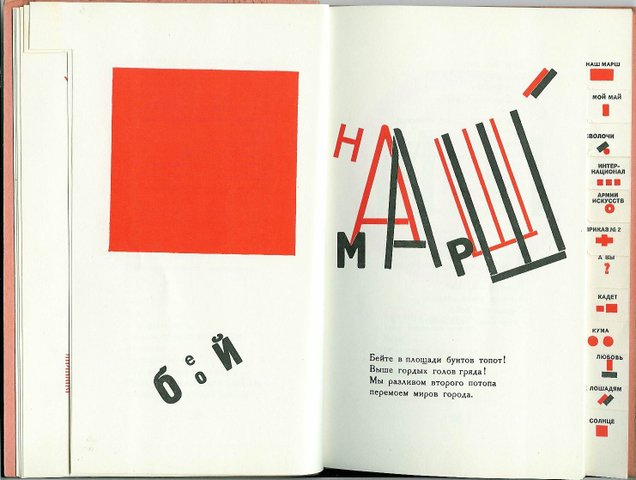Description
In the illustration of 'For La Voz' by Vladimir Mayakovsky, created in 1920 by the Lissitzky, we find an emblematic work that encapsulates the fusion between the principles of Russian constructivism and the dynamic typography. This work is not only an illustration, but a piece of conceptual art that seeks to break with the aesthetic conventions of its time, standing at the forefront of a new era for art and graphic design.
The Lissitzky, one of the most prominent constructivists, collaborates with the poet Vladimir Mayakovsky to create an enlightened book that explores and expands the limits of visual and sound poetry. In this work, the Lissitzky uses an abstract visual language that moves beyond the simple accompaniment of the text to become a visual extension of it, transforming the experience of poetry into something that looks and feels as much as it is heard.
The illustration we are analyzing presents a geometric composition and an orderly structure. It is a conglomerate of angular forms and pronounced lines that seem to arise from a central axis, evoking a sensation of movement and dynamism. The rectangular, triangular and square shapes, as well as the lines that direct the viewer's view, are distinctive characteristics of the Lissitzky style.
The colors in this work are limited, keeping in a palette of whites, black and red. Chromatic simplicity not only maintains visual clarity but also helps emphasize contrasts and tensions within the work. The use of red on black and white creates a vibrant visual effect, and these colors, accurately employed, manage to transmit the vigor and intrinsic energy of Mayakovsky's poetry.
It is crucial to mention that there are no traditional characters in this illustration. The absence of human figurative representations is replaced by the presence of purely abstract forms. This replacement encourages an approach to semantic content and formal structure instead of in conventional visual narration. The geometric elements become protagonists, suggesting a visual language parallel to the poetic.
The work reflects influences of suprematism, movement to which Lissitzky was closely linked before embracing constructivism. As a student of Kazimir Malevich, Lissitzky adopts and adapts the essential elements of suprematism the use of basic geometric forms and the renunciation of any figurative reference but guides them towards a practical and communicative function.
Although this work may seem, at first glance, an austere simplicity design, each line and each color are studied precisely to create a synergy between Mayakovsky's text and Lissitzky's graphic work. This interdisciplinary approach underlines the utopian vision of constructivist artists who aspired to integrate art into all aspects of everyday life. It is a vivid representation of the spirit of experimentation and transformation of the post -revolutionary era in Russia, where art not only illustrated reality, but also helped imagine and build a new future.
In summary, the illustration of 'For La Voz' by Vladimir Mayakovsky exemplifies the perfect harmony between avant -garde poetics and graphic innovation. The Lissitzky not only illustrates, but reconfigures poetry in the visual space, creating a hybrid and pulsating encounter between the lyrics and the form.
KUADROS ©, a famous paint on your wall.
Hand-made oil painting reproductions, with the quality of professional artists and the distinctive seal of KUADROS ©.
Art reproduction service with satisfaction guarantee. If you are not completely satisfied with the replica of your painting, we refund your money 100%.

